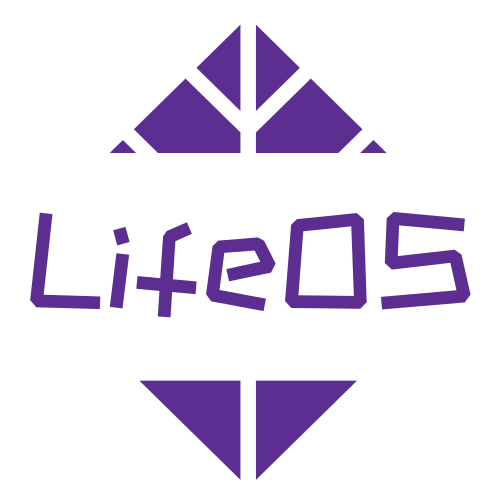Prerequisites
Markdown Syntax
Obsidian is a bi-directional linking note-taking software based on Markdown files, so you must understand the basic syntax of Markdown! Additionally, beyond the basic Markdown syntax, Obsidian has extended some special Obsidian-style syntax!
Here's a brief introduction to the syntax you need to know to get started with LifeOS. If you need to learn more, please refer to:
Lists
The syntax for lists is very simple. In any Markdown file, by typing a list identifier followed by a space, you create a list. List identifiers can be hyphens (-), asterisks (*), or plus signs (+), or even numbers (1.).
In LifeOS, list syntax is typically used to create "Theme Fleeting Notes." We recommend using hyphens (-), as shown in the example below:
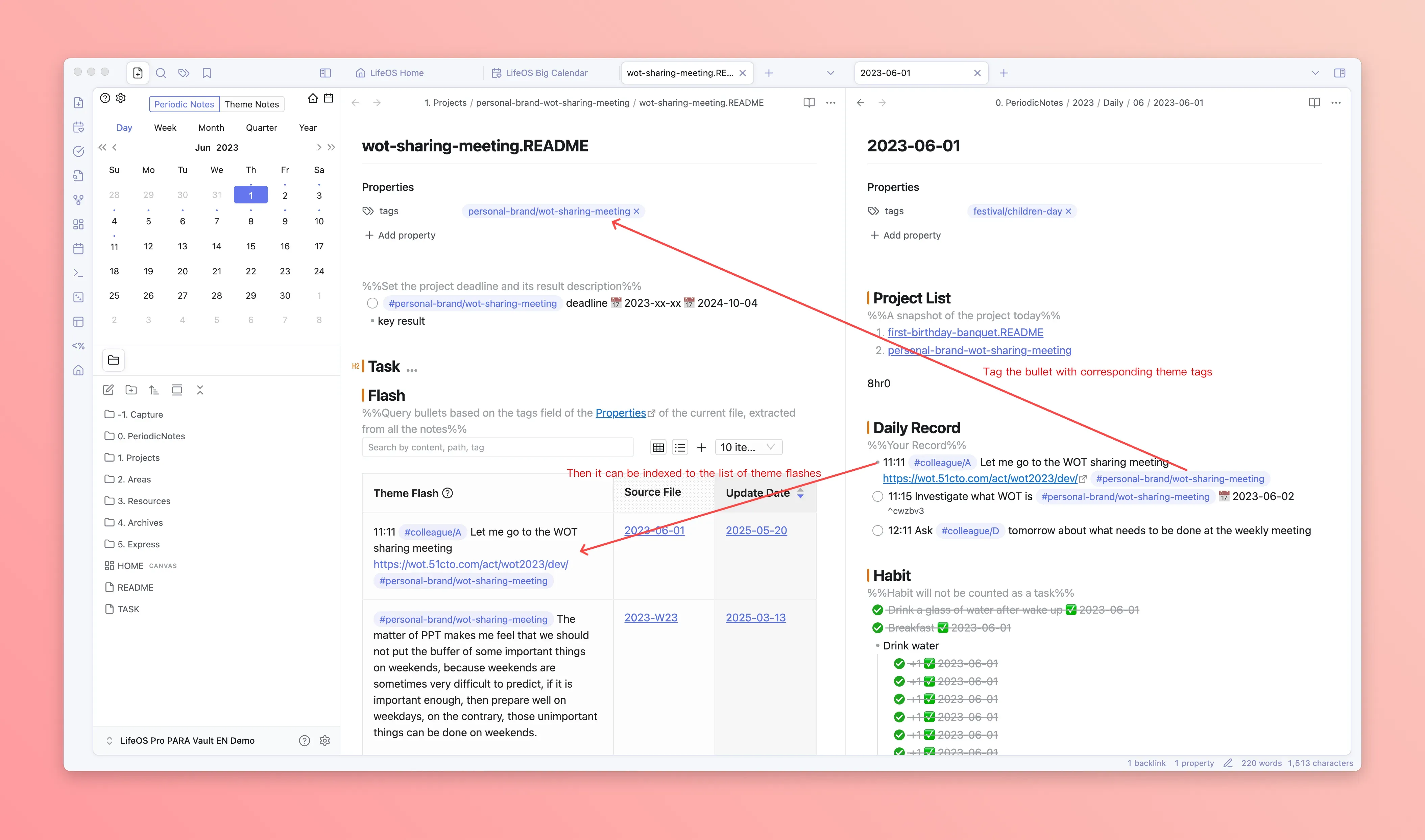
Tasks
The task syntax is very similar to the list syntax. We just need to input a space and brackets after the list identifier, as shown in the example below:
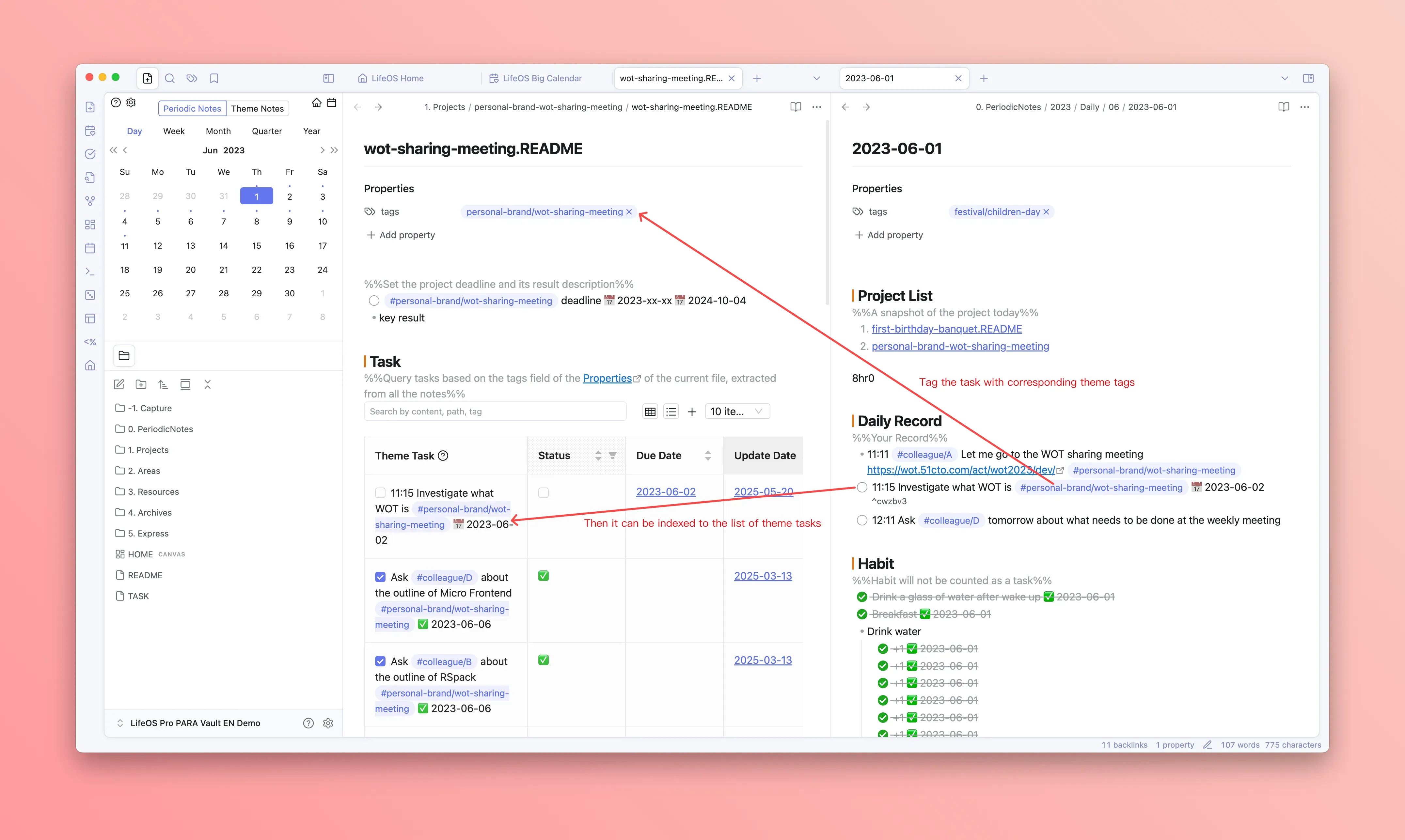
Bi-directional Links
Type two consecutive left brackets to trigger the bi-directional link syntax, as shown in the example below:
If you need to display the file content, add a ! before [[, as shown in the example below:
If you need to reference a specific block of content in a file, you can use the blockid syntax, as shown in the example below:
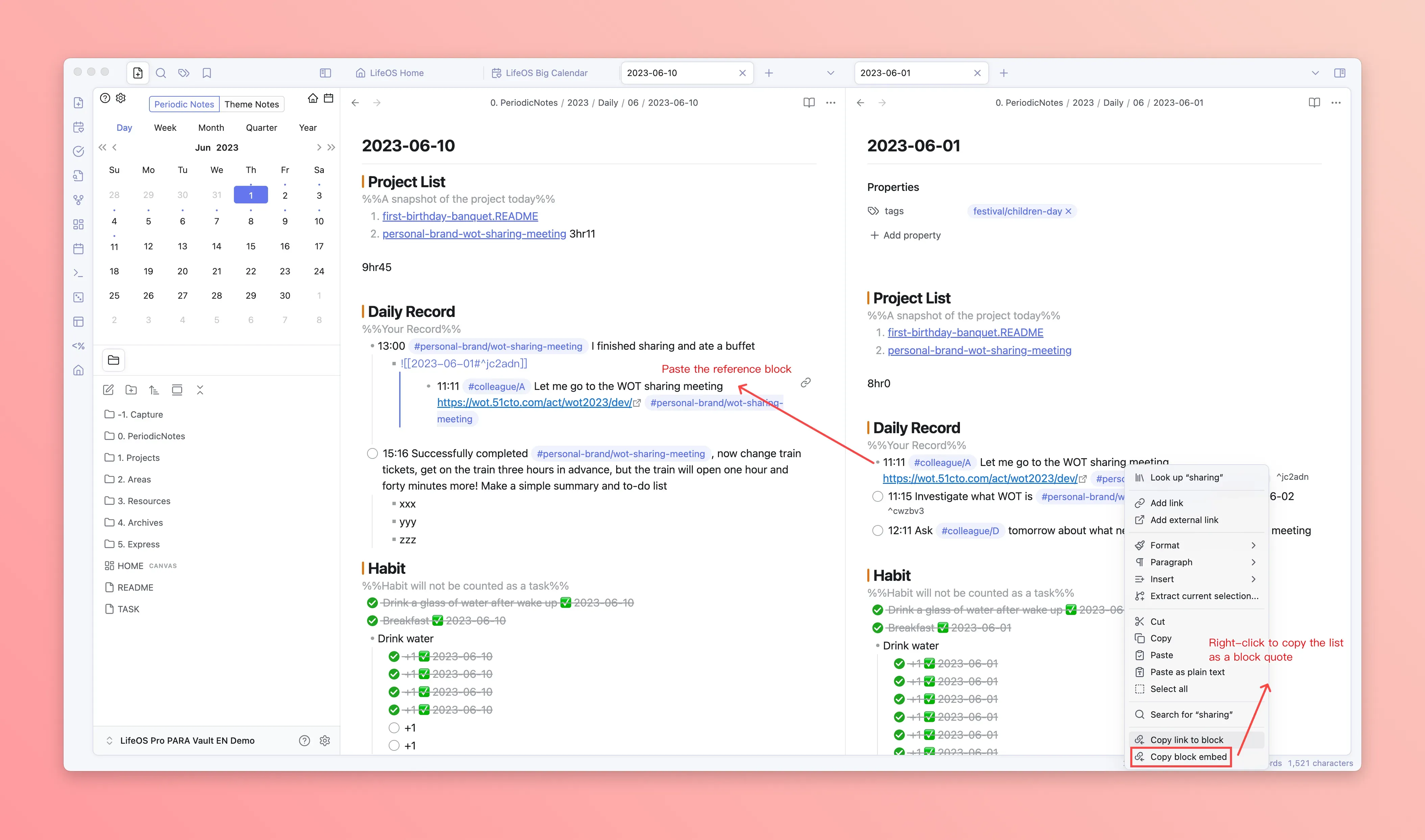
Recommended plugin for easily copying file blocks as ![[File name#^id]]: Copy Block Link
Obsidian Operations
What is a Vault?
A vault is Obsidian's core working unit, equivalent to a dedicated knowledge repository. Each vault can have customized plugins, themes, and shortcuts to meet the needs of different scenarios (such as learning, project management, writing), and LifeOS provides an example vault! In general, you only need one vault, which is the LifeOS vault.
What are Plugins?
Plugins are Obsidian's functional extension modules, giving the note-taking tool more flexibility and productivity. Obsidian provides core plugins (basic functions), third-party developers contribute community plugins (advanced functions), and LifeOS, in addition to providing an example vault, also provides a plugin of the same name, LifeOS. With this plugin, LifeOS has many enhanced features, such as advanced lists, home view, big calendar, and more.
Is LifeOS a Vault or a Plugin?
LifeOS is a life management system built on Obsidian. It is a simple, effective, and user-friendly example vault, and it also has a dedicated plugin, also called LifeOS, which allows the author to provide enhanced functionality for the LifeOS example vault through programming!
How to Open the LifeOS Example Vault?
Open the Obsidian software, click on the switch vault button in the bottom left corner, then click "Manage vaults"
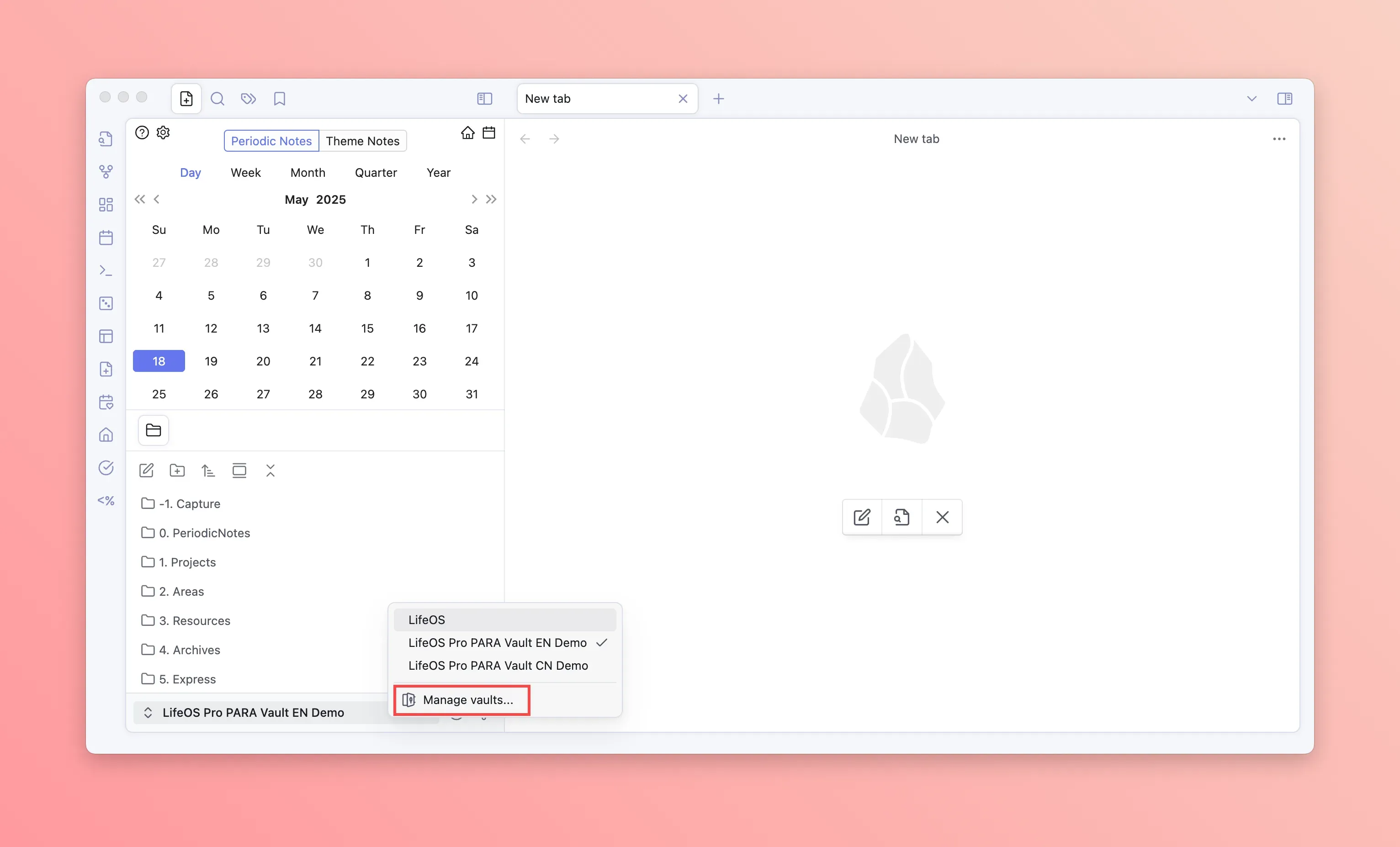
After entering the page below, select "Open" local repository
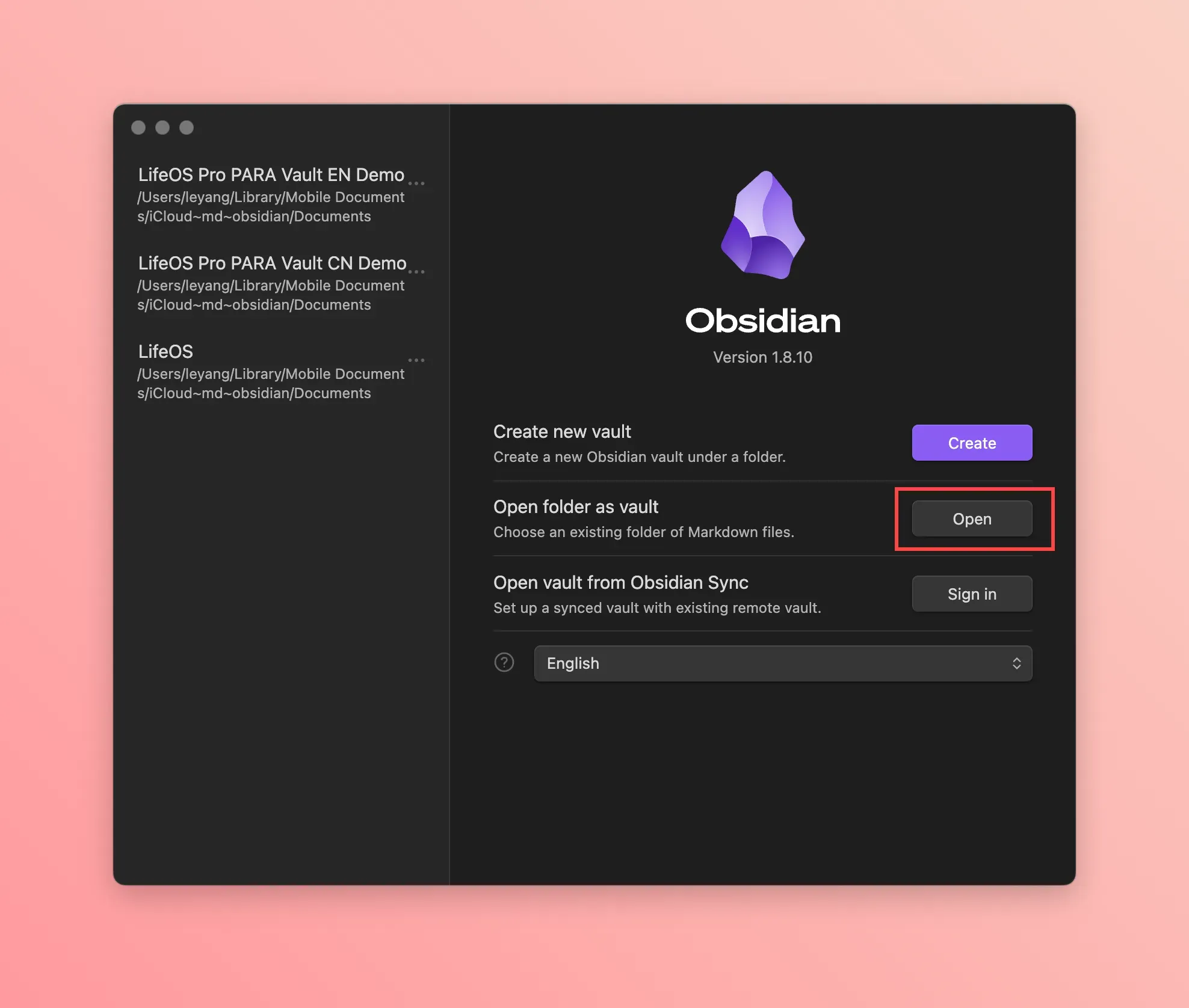
Find the directory where the LifeOS example vault is located and open it as a vault


